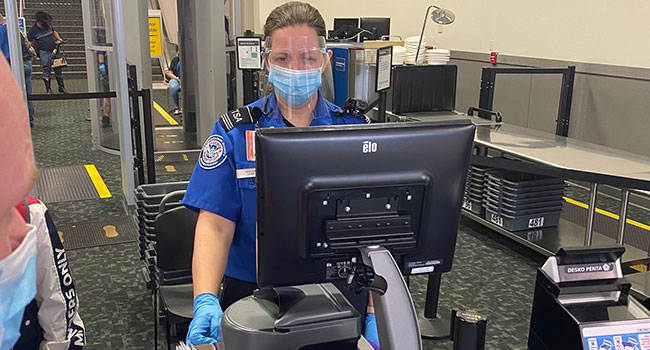
TSA Using credential authentication technology to improve identification verification capabilities
The Transportation Security Administration (TSA) at Billings International Airport (BIL) is now using new technology in the security checkpoint that confirms the validity of a traveler’s identification and confirms their flight information in near real time.
When travelers approach the travel document checking podium, they will be asked to insert or scan their photo identification themselves if a CAT unit is in use. With CAT, there is no need to provide a boarding pass to the TSA officer.
Through a secure internet connection, the CAT unit verifies that the individual is ticketed for travel that day and whether they are eligible for TSA PreCheck or general security screening. Travelers still need to check-in with their airline and show their boarding pass to the airline gate agent before boarding their flight.
This technology will enhance TSA’s detection capabilities for identifying fraudulent documents and those that have been tampered with. CAT units can authenticate several thousand types of identification including passports; state-issued driver licenses and identification cards; as well as U.S. and foreign passports.
Use of CAT eliminates the need for a traveler to physically give their photo identification to the TSA officer. This self-service opportunity reduces a touchpoint in the security checkpoint, helping travelers “Stay Healthy. Stay Secure.,” during the spread of the coronavirus. BIL is the only airport in Montana currently using CAT.
It is critical that travelers have a REAL ID-compliant driver licenses or other acceptable form of identification by the Oct. 1, 2021, REAL ID enforcement deadline. CAT units will not accept a state-issued driver license after that date if it is not REAL ID-compliant.
Passed by Congress in 2005, the REAL ID Act enacted the 9/11 Commission's recommendation that the federal government “set standards for the issuance of sources of identification, such as driver's licenses.” The Act and implementing regulations establishes minimum security standards for state-issued driver's licenses and identification cards and prohibits federal agencies including TSA from accepting driver’s licenses and identification cards from states that do not meet these standards for official purposes, such as getting through the airport security checkpoint to board a plane.